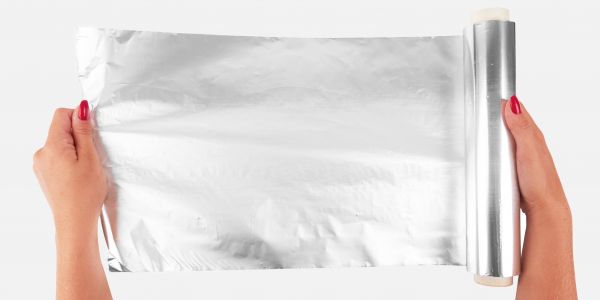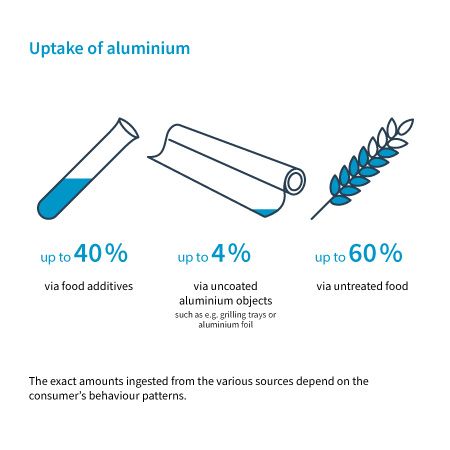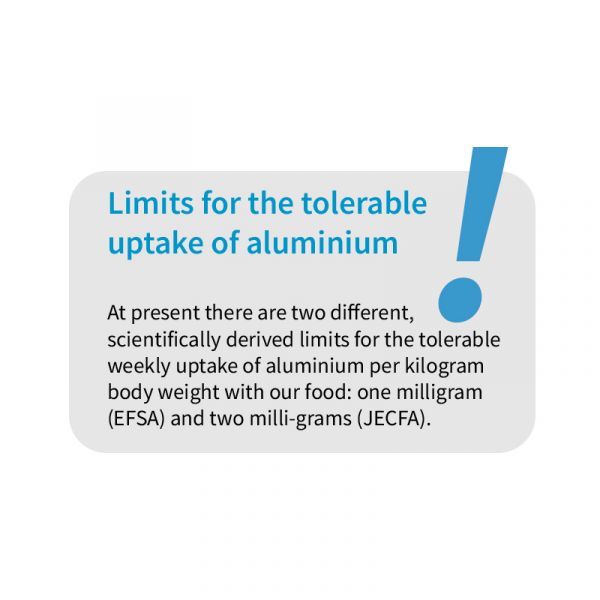

Special Focus - Aluminium Foil
Aluminium foil is a real all-rounder and can be found in every kitchen. But is it hazardous to your health if you use it to wrap your food in? What do you have to bear in mind? And what happens inside our bodies when we take up aluminium with our food?
We thank the GDA for providing this text. You can find the original german version on alles über Alu.
Is aluminium foil hazardous for our health?
No, aluminium foil in itself is not hazardous for our health. However, as a precautionary measure strongly acidic products or foods that contain a lot of salt shouldn’t be kept or barbecued in aluminium foil. Acid or salt – for instance from sliced apples, gherkins, feta cheese, or sausagemeat – can liberate aluminium ions from the foil, and these may go over (migrate) into the food. This is an aspect that’s expressly pointed out by the manufacturers on the packaging. The purpose of this is to ensure that the migration limit of five milligrams per kilogram of food defined by the European Council as a precautionary measure is not exceeded.
“If you follow certain rules, the use of aluminium foil as a packaging material for food is entirely safe.”
Dr Ulrich Nehring, certified food chemist

Aluminium foil: the all-rounder in the household
Aluminium foil is an indispensible feature of our kitchen: the packaging material offers effective protection against light, oxygen, moisture, and germs. Compared to other packaging materials – for example cling film or baking paper – aluminium foil is thus a so-called “absolute barrier”. Thanks to its properties, aluminium foil prolongs the shelf-life of food and thus makes a major contribution in the avoidance of food wastage. Incidentally: for this very reason, aluminium foil is also often used as one of many components in composite packaging systems, familiar for example from the materials used to package UHT milk. Here the aluminium foil can be just 0.006 millimeters in thickness, in other words thinner even than a human hair. Food wastage is an acute problem of our times: according to a study made by the Gesellschaft für Konsumforschung (GfK), a leading German market-research institute, and the Federal Ministry of Food and Agriculture, 50% of the food waste generated in Germany in 2017 might have been avoided – among other things by ensuring optimal storage conditions and the proper protection of the food products.
Aluminium in our body
Aluminium is all around us: we ingest it every day. As the third most abundant element in the crust of the Earth, it also finds its way into food crops and our drinking-water supplies – this is why it’s a natural ingredient of much of the food we ingest, such as tea, salad, or chocolate. By the way: at over 60%, we take up by far the largest part of this natural element with untreated food, followed by food additives, which account for up to 40% of the amount we ingest. Only a small fraction of up to 4% finds its way into our bodies via uncoated aluminium objects such as household utensils, grilling trays, or aluminium foil.


According to the current scientific status, however, the ingestion of aluminium doesn’t pose a health hazard for the average, healthy consumer: According to the European Food Safety Authority (EFSA), the weekly uptake of one milligram of aluminium per kilogram body weight with our food is safe from the physiological viewpoint. For a person weighing 70 kilograms, the limit for the amount of aluminium thus lies at 70 milligrams per week. A person with healthy kidneys swiftly eliminates 99.9% of aluminium via the renal route.
In the light of recent scientific studies, in 2011 the Joint FAO/WHO Expert Committee on Food Additives (JECFA) went as far as raising the limit for the tolerable uptake of aluminium to two milligrams of aluminium per kilogram body weight, in other word to double the limit recommended by the EFSA in 2008.
